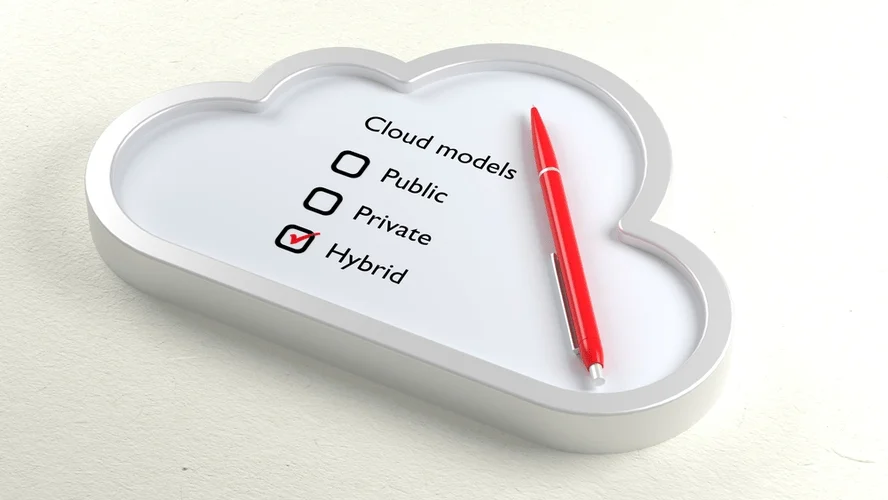Engineers can use database management systems (DBMS) to access data and use SQL statements to retrieve, query, and analyze it. They enable communication between internal systems or services, facilitating data synchronization and workflow automation. An API (Application Programming Interface) is a set of protocols, tools, and definitions that enable multiple applications to communicate and interact with each other. In this article, we will delve into the benefits of using API to database integrations and provide the tools and best practices needed for it. There are a variety of vendor solutions for developing and managing APIs available in the market today.

Preparing, both strategically and culturally, to create and consume APIs is key to achieving business agility, unlocking new value in existing assets, and accelerating the process of delivering new ideas to the market. As the chief cloud strategy officer for Deloitte Consulting LLP, David is responsible for building innovative technologies that help clients operate more efficiently while delivering strategies that enable them to disrupt their markets. David is widely respected as a visionary in cloud computing—he was recently named the number one cloud influencer in a report by Apollo Research.
How to build an API management strategy
As clients across industries are aggressively adopting cloud, they have realized that a well-defined API and integration strategy sits at the core of this approach. A well-thought-out strategy will enable them to build a flexible, scalable, profitable, and long-lasting ecosystem of connected systems and applications to serve their partners, customers, and employees. Clients are increasingly seeking API-rich applications and platforms that seamlessly integrate in an ecosystem and ease the way of doing business in the digital age. In the intricate maze of our modern digital landscape, data integration architects stand as the vanguard, bridging gaps and fostering connectivity in information technology landscapes.
Did you know our Slack is the most active Slack community on data integration? A marketing agency wants to analyze social media sentiment for their client’s brands. They plan to integrate social media APIs (e.g., Twitter, Facebook) with a NoSQL database to collect, store, and analyze social media posts and comments. For instance, when integrating a customer relationship management (CRM) system with an email marketing API, the integration can validate and sanitize contact data before storage in an SQL server. This helps maintain accurate and consistent customer records, minimizing errors and duplicates. The API server receives and processes requests according to the specified API endpoints and parameters.
Best Practices for API and Database Integration
Unlike traditional APIs, the Bulk API operates asynchronously, making it well-suited for data migration, data synchronization, and batch processing tasks. By using the Bulk API, you can efficiently manage massive datasets without overburdening your Salesforce instance. Imagine you run a small online store that uses Salesforce to manage customer information and a separate software to manage inventory. Without integration, you would need to manually update both systems after each order. With Apex integration, these two systems can “talk” to each other and share information seamlessly.
- It can be implemented at the API level, where responses to frequently requested data are stored and served directly from the API cache.
- For developing, managing and governing APIs without creating bureaucratic hurdles, software engineering leaders can implement an “adaptive governance” model.
- It enables seamless communication and data exchange between Salesforce and external systems.
- The goal here is to have a firm idea of what you want to accomplish through an API integration strategy and how to measure that success.
- To retrieve access to the data stored in monolithic systems, you can add an API abstraction layer atop your legacy systems and connect it with newer microservices.
- You can integrate Salesforce with other apps to unlock new resources and boost operational visibility.
Doing so reduced traditional product-development IT costs by 41 percent and led to a 12-fold increase in new releases. Seeing these kinds of tangible benefits makes it easier for business leaders to increase their expectations of their software engineers to develop better products more efficiently. Quantifying that potential value in potential savings, efficiencies, and FTE reassignment is crucial in building a business case to invest in developing APIs. Today, with businesses becoming increasingly data-driven, the role of a data integration architect has ascended to the executive level. Their input is not just technical; it’s strategic, influencing decision-making processes and shaping the future trajectory of enterprises.
HTTP methods define supported actions
Advanced API capabilities allow developers to create a richer customer experience by pulling together a deeper array of data sets (rather than simply scraping data). Salesforce.com’s partner ecosystem, for example, offers a developer-friendly toolbox that has spurred partners to build a huge number of employee and customer applications that rely on APIs. As a result, more traffic comes through the Salesforce APIs than through its website. Integrate.io provides businesses with a powerful suite of data integration tools to manage and integrate their data.

As businesses become more data-driven, these professionals collaborate closely with internal stakeholders, ensuring that data integration mirrors business requirements. Its approach accounts for institutions’ existing investments in middleware, but this middleware isn’t required to get started, as they can use Lingk’s cloud services for data exchange instead. Its platform also provides situational awareness of what data elements are being shared with connected applications already in use on campus. Any data that is exchanged between applications can be routed through Lingk to audit scheduled file transfers and real-time API calls for data policy compliance. The connective capability of APIs allows companies to access new value outside the business. API developers, for example, can create innovative products and services that tie into a company’s systems.
Ready for easier software integrations?
Finally, API management platforms have evolved to complement the core messaging, middleware, and service bus offerings from yesteryear. Vendors include new entrants and established players, including IBM, SAP, Oracle, Tibco, MuleSoft, global database api Dell, Software AG, CA, Dell, and Apigee. Using APIs effectively requires a new way of thinking about partnerships, a new way of business and technology working together, and a new pace of development, funding, and coordination.
For businesses integrating legacy systems with more modern systems, middleware is ideal, but it’s mostly a communications tool and has limited capabilities for data analytics. If only the ability to harness insights from this data kept pace with the ability to create it. Building a platform for integration is not new to CIBC, which has thousands of highly reusable web services running across its platform. But the team recognized that the current SOA-based model is being replaced by a next-gen architecture—one based on REST-ful APIs combined with a microservices architecture.
From batch to real-time data processing
And with enough APIs, you can convert your business from being a monolithic solution (doing just one thing great) to being a platform — doing a lot of things great with the help of connected partners. This approach can be a good middle ground for extending the life of your backend systems while you assess different scenarios for their transformation. By using a combination of partner and internal APIs, you can also take on the aggregator role. Trefis estimates that Expedia, whose business is built mostly on APIs, will generate $12.3 billion in revenue by the end of 2020 (despite the pandemic).

Microservices look to break larger applications into small, modular, independently deployable services. This approach turns the rhetoric of SOA into a modernized application architecture and can magnify APIs’ impacts. That focus on monetization of APIs should extend to internal functions as well. Effectively using APIs can reduce operational or technology costs by simplifying and accelerating development. One bank, for instance, created a library of standardized APIs that software developers could use as needed for a wide variety of data-access tasks rather than having to figure out the process each time.
Streaming API for Real-time Data Synchronization
This may result in the loss of private and sensitive information about millions of users. Looking at APIs as a way to achieve technical purposes isn’t enough in the postpandemic world. They are now essential in advancing digital business strategies and should be treated as products without prioritizing monetization. This ensures accuracy, timeliness and consistency, especially in enterprises where multiple developers work on APIs.
Tools for Integrating APIs
By subjecting the system to realistic and high-load scenarios, organizations can determine its stability, resilience, and capacity to handle peak loads. This information is crucial for capacity planning, ensuring that the infrastructure and resources are adequately provisioned to meet the expected demand. Data sharding is a technique used in database systems to horizontally partition data across multiple servers or nodes. The purpose of data sharding is to distribute the database workload and improve performance by allowing concurrent processing of data across multiple shards.
The need to improve productivity and speed, and at the same time enable greater revenue potential, is expediting the shift to cloud-based solutions and applications. We have observed six foundational shifts companies are making to their data-architecture blueprints that enable more rapid delivery of new capabilities and vastly simplify existing architectural approaches (exhibit). They touch nearly all data activities, including acquisition, processing, storage, analysis, and exposure.
